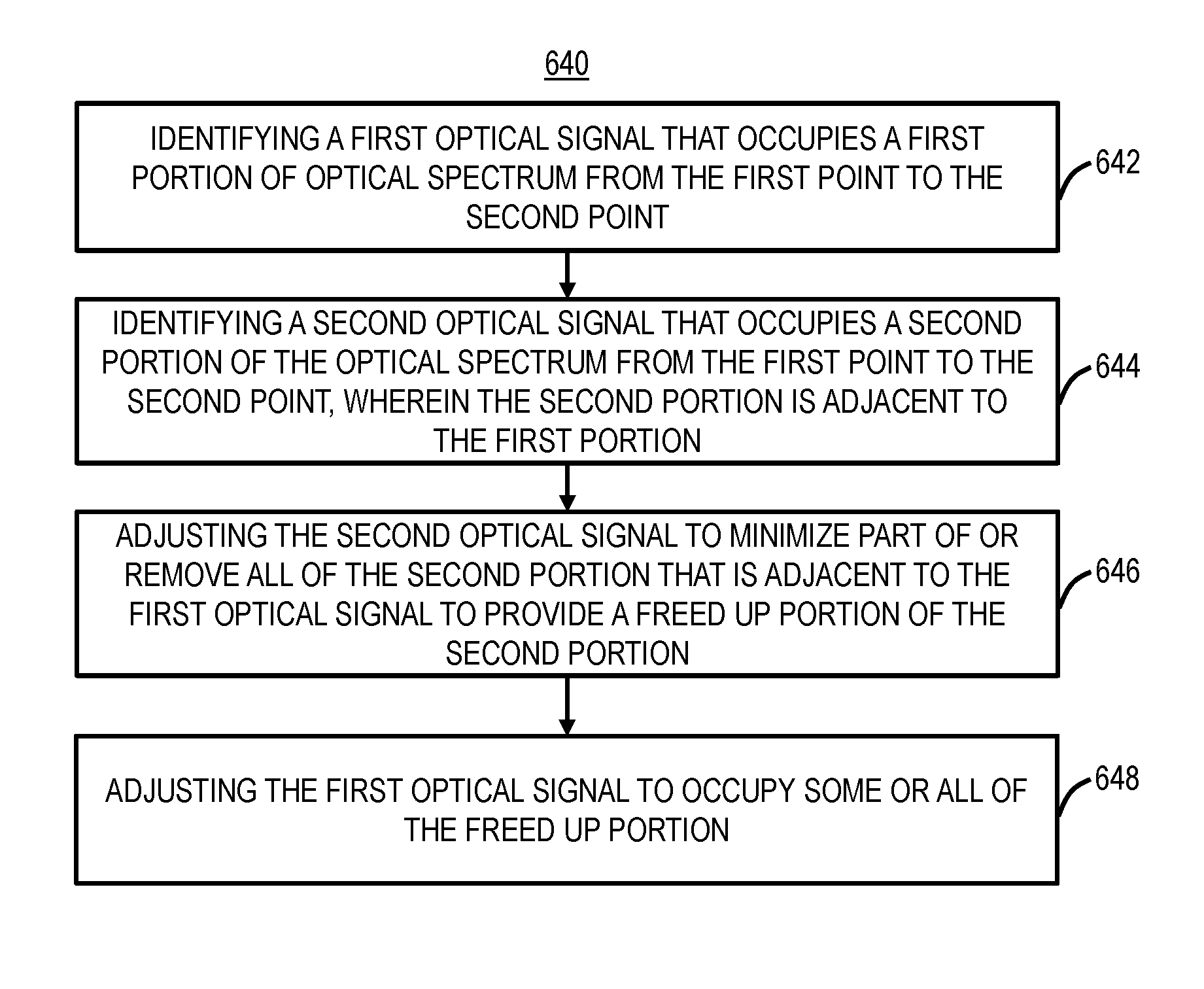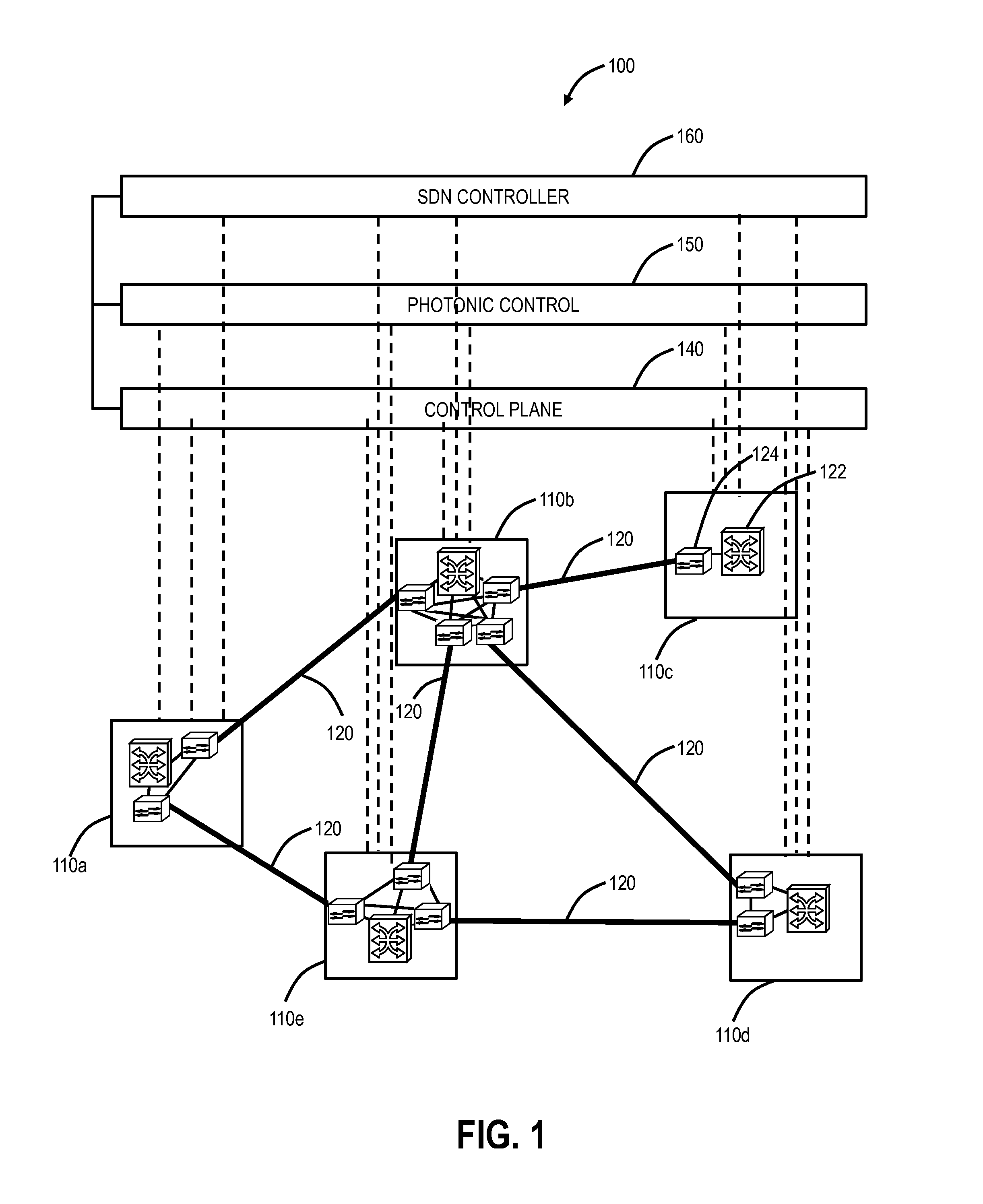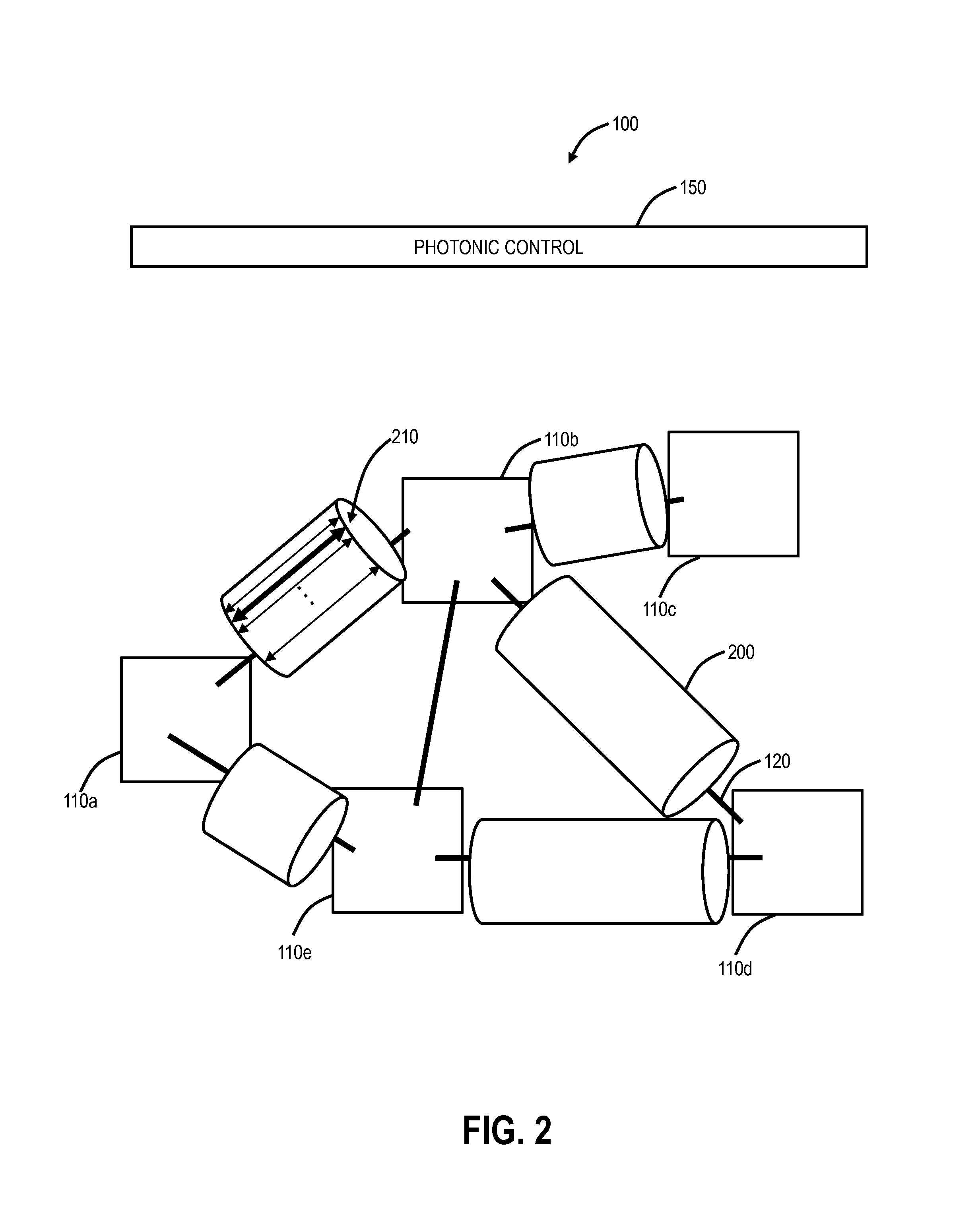Margin-based optimization systems and methods in optical networks to unblock superchannels
a network and optimization system technology, applied in the field of optical network optimization systems and methods, can solve the problems of insufficient capability, insufficient capability, insufficient capability based on any noise margin and spectral width, etc., to achieve the effect of optimizing the capacity of the optical network, reducing the margin, and increasing the modulation symbol ra
- Summary
- Abstract
- Description
- Claims
- Application Information
AI Technical Summary
Benefits of technology
Problems solved by technology
Method used
Image
Examples
Embodiment Construction
[0036]In various exemplary embodiments, margin-based optimization systems and methods in optical networks are described. The systems and methods can not only attempt to increase capacity, but also freezes capacity and even reduces optical footprint with a reduction of impact function. That is, the systems and methods propose to optimize as well as penalize (de-optimize) wavelengths for the overall benefit in the optical network, i.e., consume as much margin as possible for additional capacity where it can be harvested. The systems and methods improve specific wavelengths and penalize other wavelengths to improve overall mesh network capacity, treat modems that look the same differently based on an ability to provide additional revenue generating services by providing network capacity, apply a different optical network optimization criteria based on modem traffic carrying potential, and use optical modem traffic carrying potential as a mechanism to determine whether to improve or pen...
PUM
 Login to View More
Login to View More Abstract
Description
Claims
Application Information
 Login to View More
Login to View More - R&D
- Intellectual Property
- Life Sciences
- Materials
- Tech Scout
- Unparalleled Data Quality
- Higher Quality Content
- 60% Fewer Hallucinations
Browse by: Latest US Patents, China's latest patents, Technical Efficacy Thesaurus, Application Domain, Technology Topic, Popular Technical Reports.
© 2025 PatSnap. All rights reserved.Legal|Privacy policy|Modern Slavery Act Transparency Statement|Sitemap|About US| Contact US: help@patsnap.com



